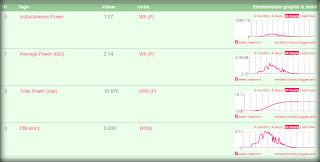
After a lot of reading I decided to give Kamikaze a go on the Infineon ADM5120P machine. With only 2MB NOR Flash, there's not enough room to run a decent set of tools without having to use swap-space, hurting performance quite a lot. So, after installing my Ubuntu virtual machine, and setting up the Kamikaze 8.09.02 SDK environment, I modified the kernel configuration in order to mount a USB-drive as rootfs. I know, I know, I'll lose one valuable USB port and I'll have to use an thumbdrive on the outside of my router, but I don't care. I'm happy to be able to remove the USB-drive from the router and to mount it on my Ubuntu-box !
Anyhow, after having run the 'make kernel_menuconfig" and the 'make menuconfig', I was able to flash the router with my own base-kernel image and after mounting the USB-rootfs, I was able to install more packages like the GPIO-modules. It took me a while to figure out which versions to download and to compile. So never mix old sources or packages with more recent ones. Also beware for the precompiled packages in the Openwrt repository, if you're using a non-standard router like the ADM5120P-based Edimax or Sweex or Omnima boards, you're out of luck cause none of the images will work on your board, an neither of the corresponding packages will load.
After verifying the correct loading of GPIO, GPIO_proxy and GPIO_Leds package we're all set !
Oh yes, the ntp-package was usefull to keep the machine correctly in sync with my ISP's timeserver. And adding the dns-servers in the resolv.conf file allowed correct resolution of internet addresses. :-)



